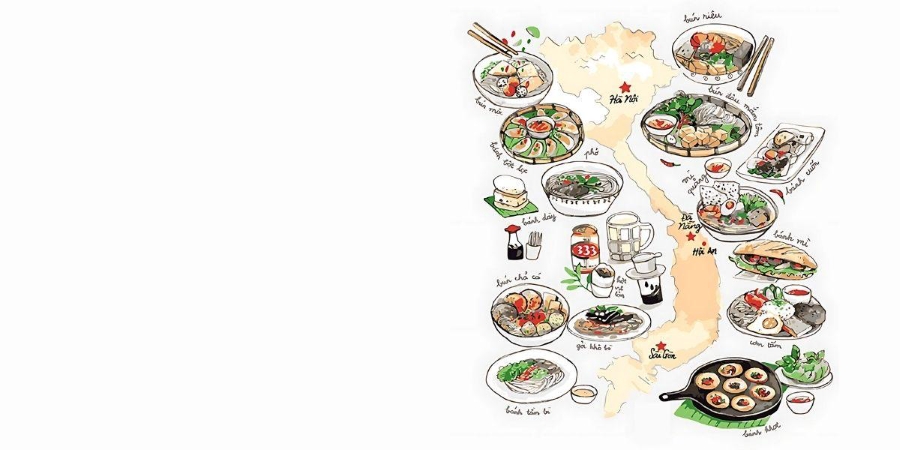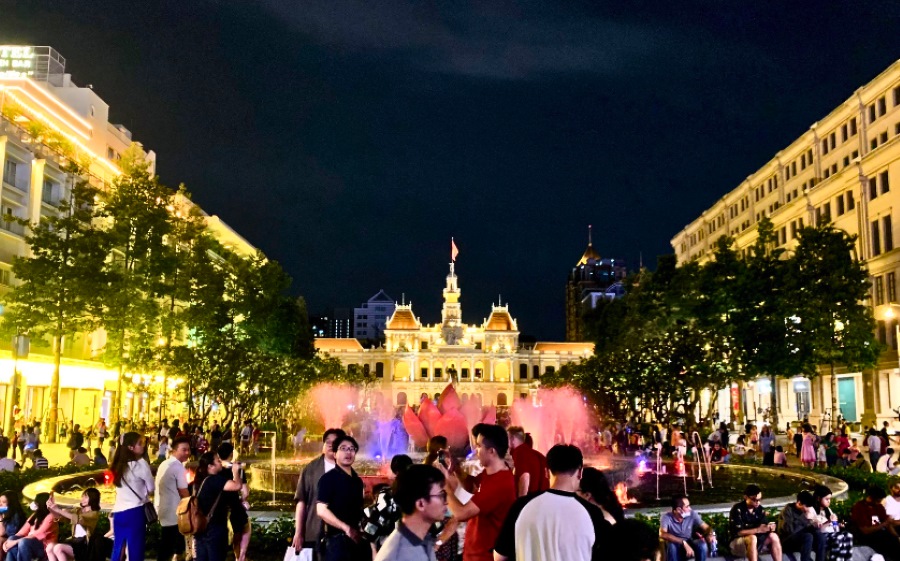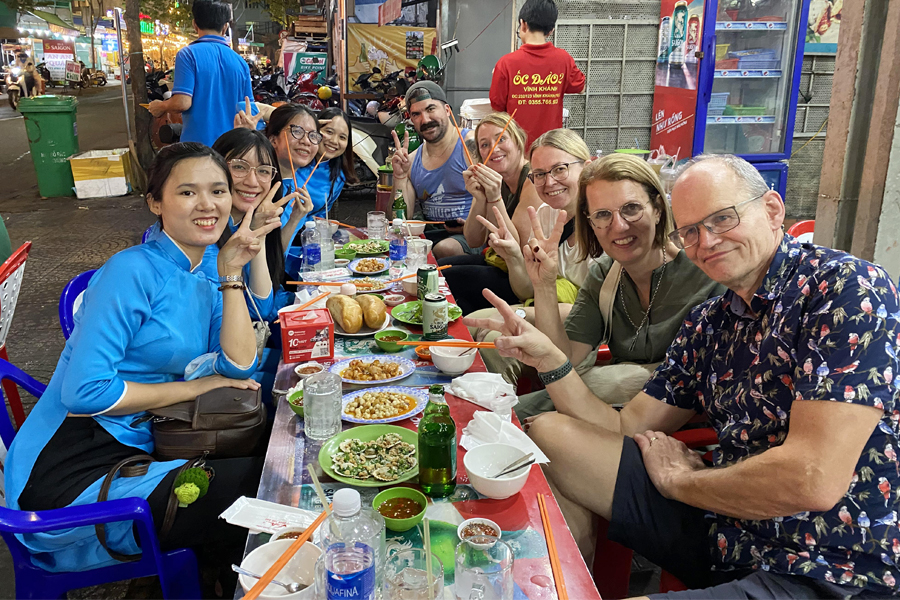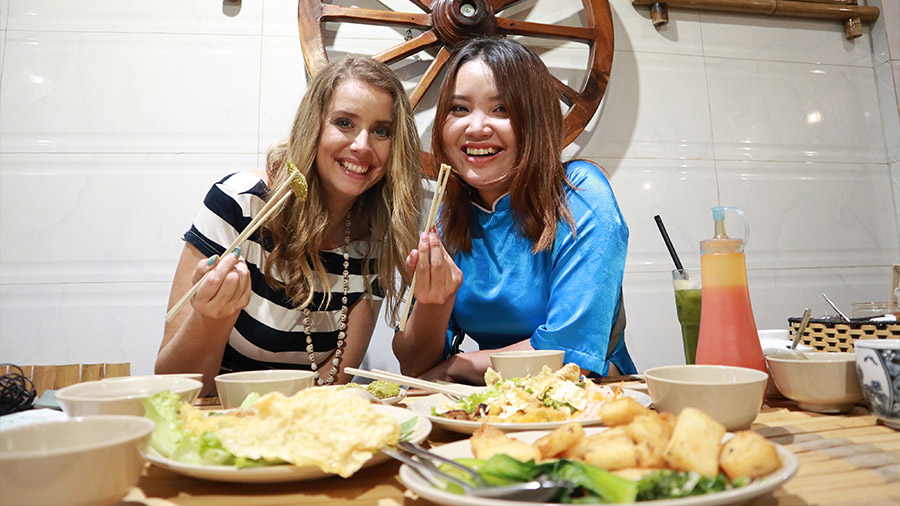Vietnamese cuisine culture is not simply delicious food but also a cultural treasure hidden in every flavor. The diversity of dishes combined with rich flavors has created an attractive culinary picture that attracts millions of domestic and foreign tourists every year. In this article, let’s explore with Kisstour the unique cuisine of each region on this S-shaped strip of land.
1. Learn about the origin of Vietnamese cuisine culture
Vietnamese food culture was formed over thousands of years of history, influenced by the rice civilization along with the impact of geographical and climatic factors. Each region on the S-shaped strip of land has a different natural environment and weather conditions, creating unique culinary characteristics.
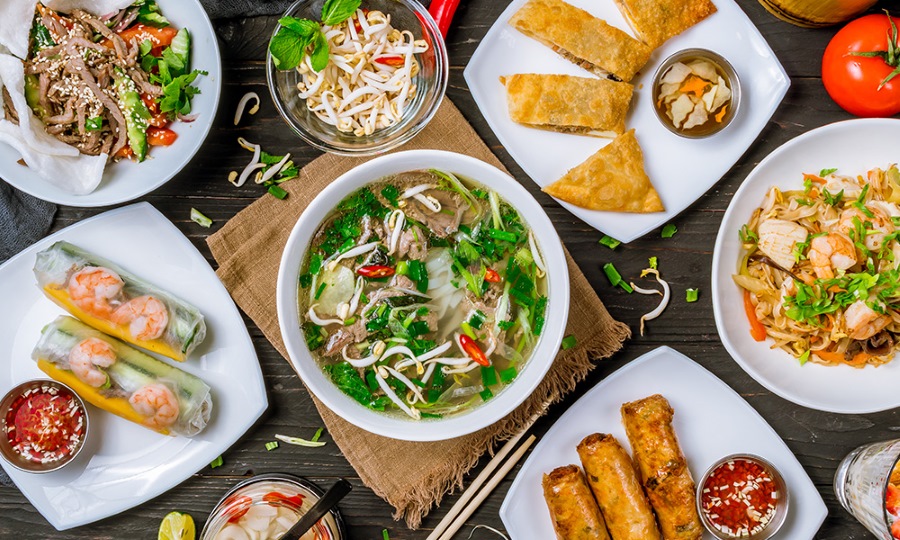
Learn about the origin of Vietnamese culinary culture. | Source: Internet.
Not only that, historical marks and cultural exchanges have contributed to enriching Vietnamese cuisine. Migrations, trade, and the colonial period have brought many new elements, blending with national identity to create a cuisine that is both traditional and modern.
2. Vietnamese cuisine culture varies by regions
Vietnam likes vivid pictures with many colors and diverse changes in different geographical locations. From North to South, the S-shaped country has opened up an exciting journey of culinary discovery. Vietnamese cuisine throughout each region has brought unique flavors that contribute to the richness and diversity of the country’s cuisine. Let’s learn about the cuisine in the section below.
2.1. Northern Vietnamese cuisine
Northern cuisine brings a refined touch with dishes that are simple, mild, and less spicy. Unlike other regions, Northern cuisine always focuses on natural flavors rather than using strong spices.
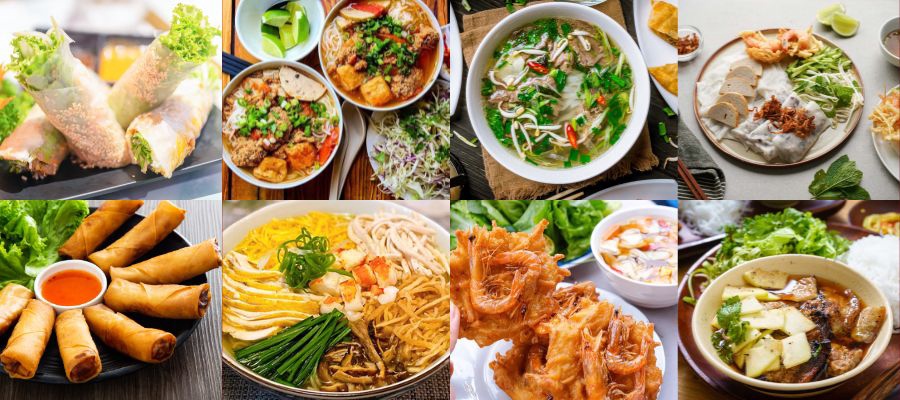
Discover Northern Vietnamese cuisine. | Source: Collecting.
Each dish is carefully and thoughtfully prepared to keep the purity and elegance of each culinary experience. These qualities have created a unique characteristic of the Kinh Bac region’s cuisine.
2.2. Central Vietnamese cuisine
Completely different from the gentle flavor of the North, coming to the Central region you will enjoy rich, spicy dishes with a characteristic spicy taste.

Discover Central Vietnamese cuisine. | Source: Collecting.
Particularly, the cuisine of the ancient capital is often highly appreciated for the meticulousness in each step of processing and the sophistication when decorating dishes. Some famous dishes that you cannot miss when coming to Dreamy Hue such as beef noodle soup Hue, banh beo, banh loc…
2.3. Southern Vietnamese cuisine
With a hot, humid climate and fertile soil, the South stands out for dishes with gentle flavors combined with various raw vegetables. Specialties such as Broken Rice (Com Tam), Crab Tapioca Noodle Soup (Bánh canh cua), Sa Dec noodles, Saigon mixed rice paper, and many other street dishes have created the unique appeal of the cuisine here.
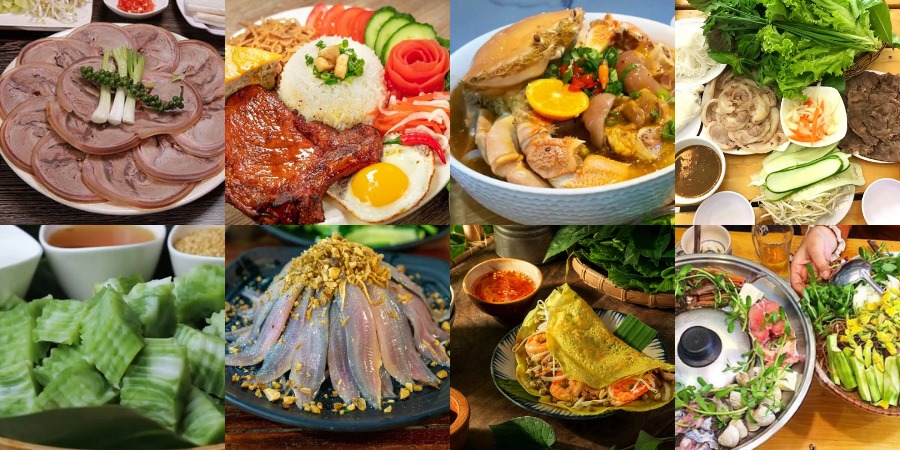
Southern Vietnamese cuisine. | Source: Collecting.
3. Elements that create Vietnamese cuisine culture
Food culture in Vietnam is not only appreciated for its taste but also for its cultural, and spiritual value and application of ingredients. Below are the factors that make Vietnamese cuisine special.
3.1. Raw and diverse ingredients
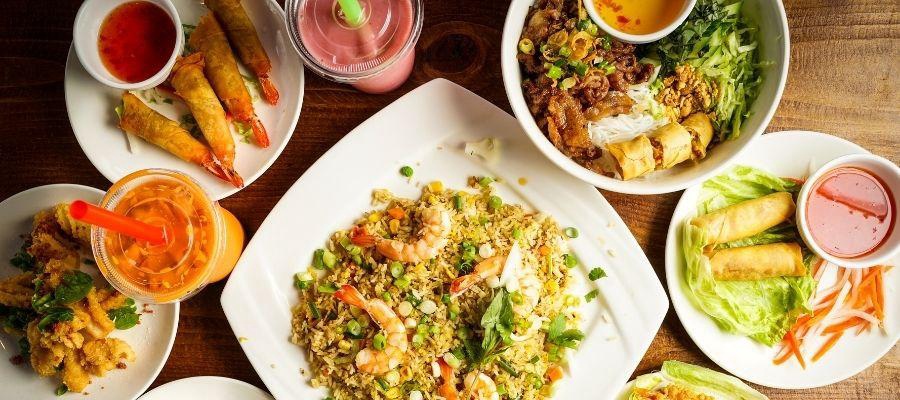
Fresh ingredients are an important factor that impresses tourists. | Source: Internet.
One of the recognizable specialties of Vietnamese food culture is the delicious freshness of ingredients from herbs to seafood, meat, and spices. In particular, Vietnamese dishes often combine many types of raw vegetables to help enhance the freshness and balance of the meal.
***Fun fact: Most Vietnamese children hate raw vegetables and herbs until they grow and become obsessed with them.
3.2. Harmony between ingredients
In Vietnamese cultural cuisine, the harmonious combination of sour, spicy, salty, and sweet flavors is given top attention. Each dish must achieve an absolute balance between flavors, creating a unique culinary experience.

Bun rieu cua – Crab meat noodle soup with a rich and flavorful broth. | Source: Luu Dang.
For example, fish sauce – a traditional Vietnamese spice – is a testament to the wonderful harmony of salty, sweet, and sour, making it difficult for anyone who tries to forget.
3.3. Cuisine and spiritual elements
For Vietnamese people, food is not only a daily thing but also a part of religion and spirituality. During Tet holidays and death anniversaries, cooking and worshiping ancestors through traditional dishes are always respected. Family meals are not only a gathering place but also an expression of emotional connection between generations.
3.4. Ability to connect communities
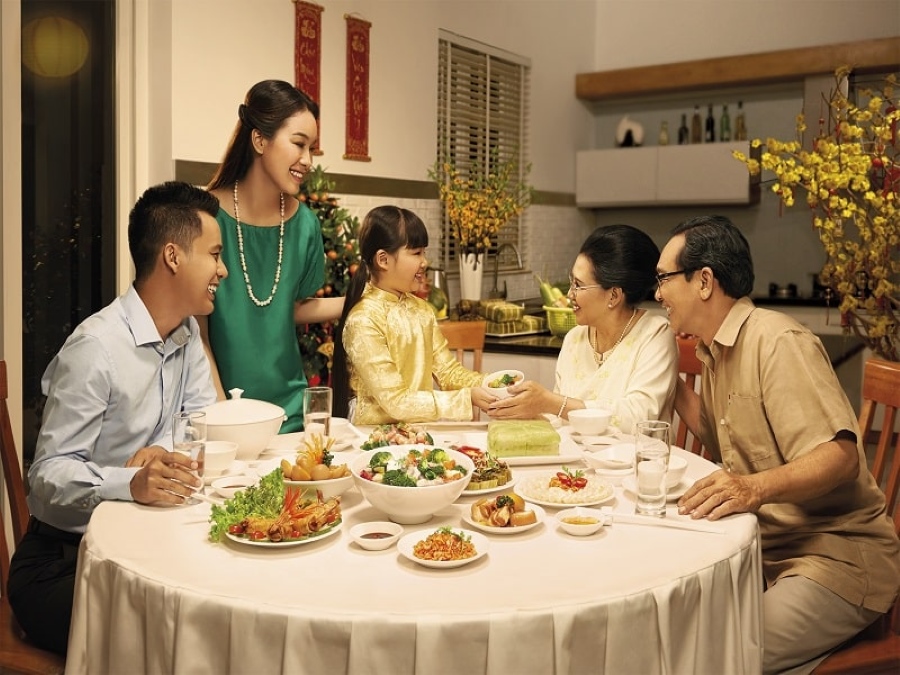
Family gather together around cozy meals. | Source: Internet.
The culture of Vietnamese food is not just simple dishes but also a way for Vietnamese people to connect. Whether it’s a cozy family meal or a party at a sidewalk restaurant, food always acts as a bridge connecting people, sharing beautiful moments and memories.
4. Popular dishes with foreigners
When discussing outstanding Vietnamese dishes on the world culinary map, it is impossible not to mention Street Food – typical street food, easily found everywhere. It is the simplicity, accessibility, and rich flavors that help Vietnamese street food conquer international tourists.
4.1. Pho – The quintessence of Vietnamese cultural cuisine
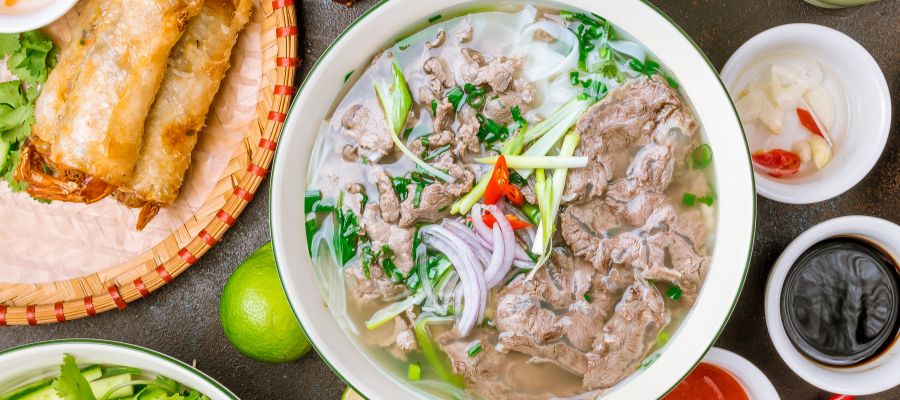
Pho is called the soul of Vietnamese culinary culture. | Source: Internet.
Dubbed the soul of Vietnamese cuisine, Pho is not simply a traditional dish but also a symbol of the S-shaped country. A sweet broth combined with soft noodles and fresh beef has made pho a “national soul”, conquering the tastes of Vietnamese and international friends.
4.2. Banh Mi – Famous street food
Banh mi has long made its mark on the world’s culinary map thanks to the perfect blend of crispy crust and fillings ranging from meat, and vegetables to rich sauces.
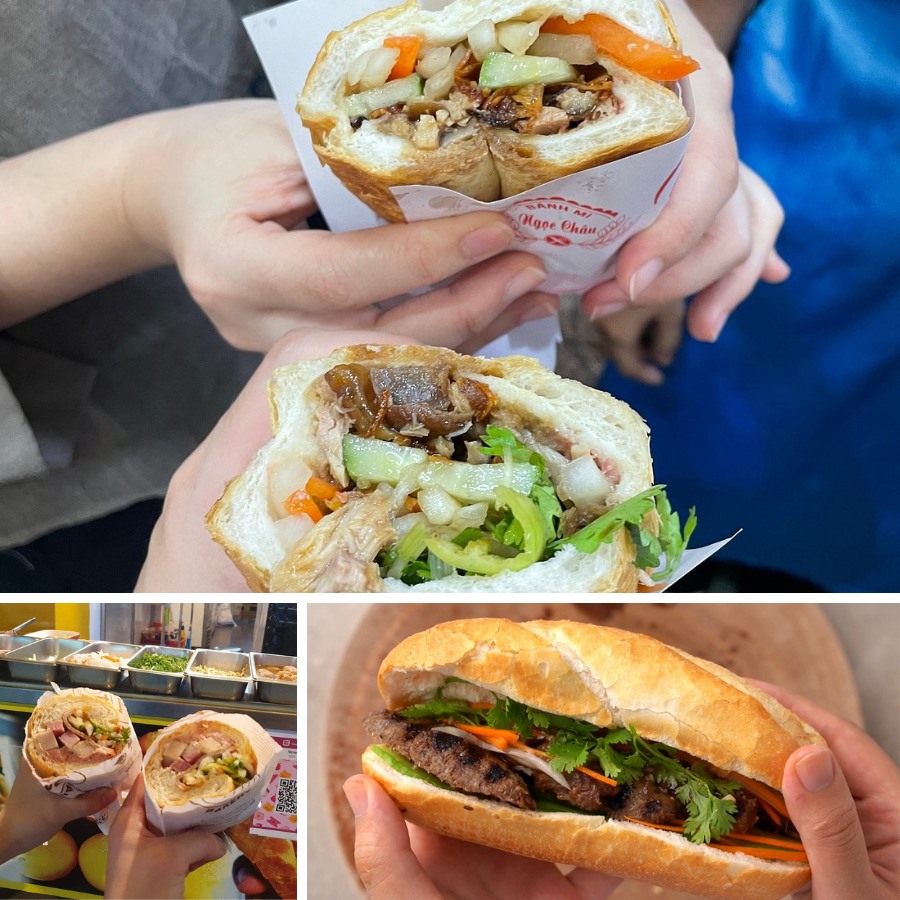
Banh Mi is a budget-friendly breakfast enjoyed daily by many Vietnamese people. | Source: Kisstour.
Not only is it convenient fast food, but Banh mi is also living proof of the unique interference between French and Vietnamese cuisines, bringing an interesting experience to diners.
4.3. Bun Cha – Taste of Hanoi
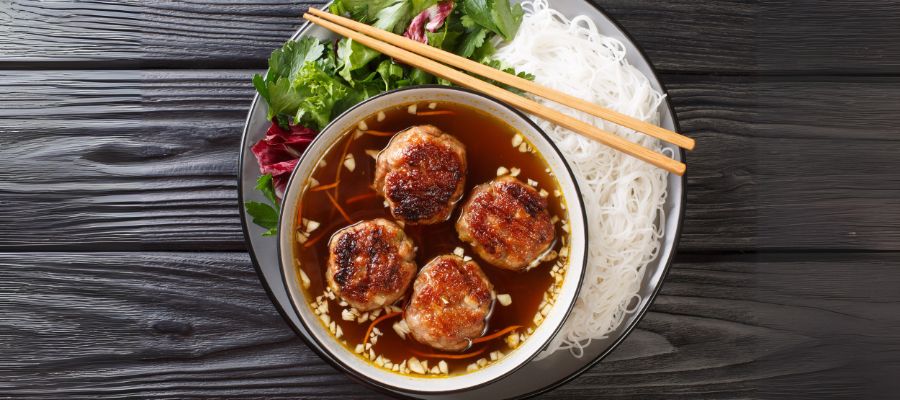
Bun cha is the taste of Hanoi. | Source: Internet.
The rich flavor of grilled meat mixed with sweet and sour sauce, combined with fresh noodles and raw vegetables, bun cha is a memorable dish for many tourists when coming to Hanoi.
4.4. Goi Cuon – Coolness from nature
Goi cuon, also known as spring rolls, is a delicious snack, made from shrimp, pork, vermicelli, and many fresh herbs wrapped in a soft layer of rice paper.
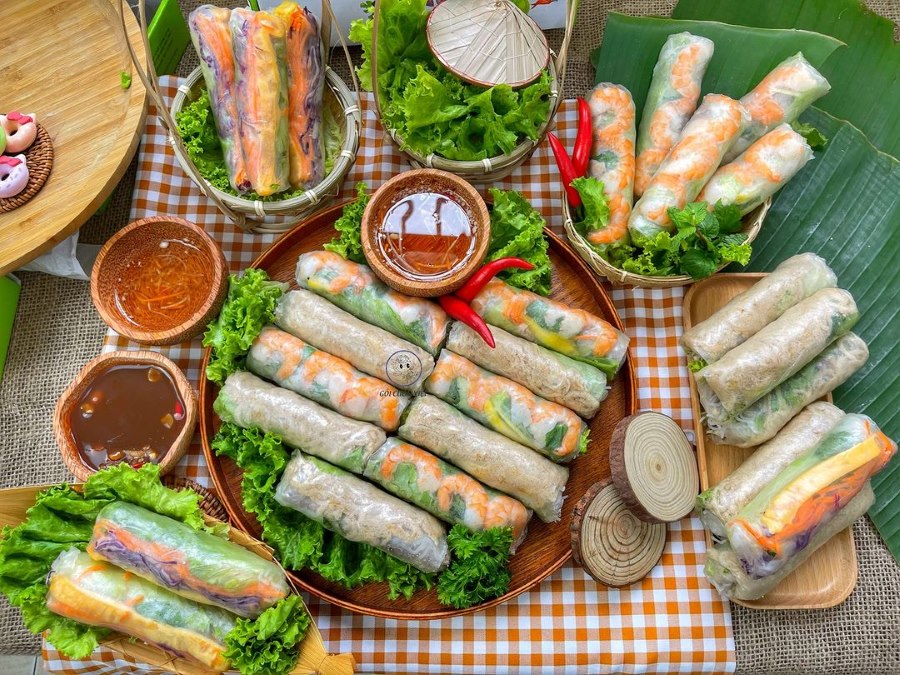
Goi cuon – shrimp and meat spring rolls. | Source: goicuonviet.
This dish not only brings fresh flavors but also demonstrates the healthiness of the ingredients, bringing an enjoyable culinary experience to international visitors.
Vietnamese cuisine culture is not only a perfect combination of cultural values and Vietnamese people. Hopefully, this article of KissTour will help you gain a deeper insight into the unique culinary culture of Vietnam. If you want to explore the street food here, do not hesitate to contact us immediately to have memorable experiences with Vietnamese culture and people.
To fully experience Vietnamese cuisine, visitors can join a well-known Ho Chi Minh Street food Tour such as Kiss Food Tour, a leading culinary tour guide service of KissTour that helps tourists explore Vietnamese cultural cuisine through unique street dishes, filled with local and indigenous flavors.
